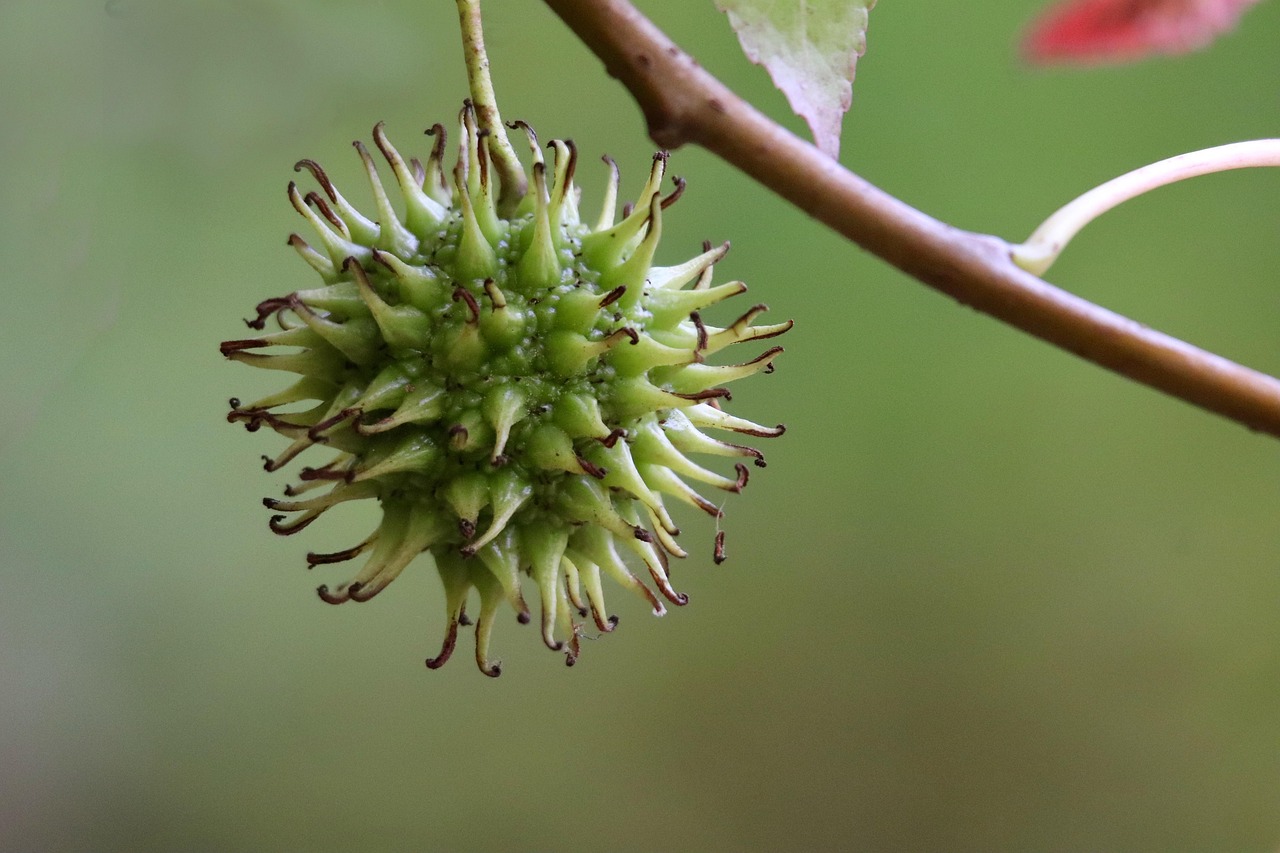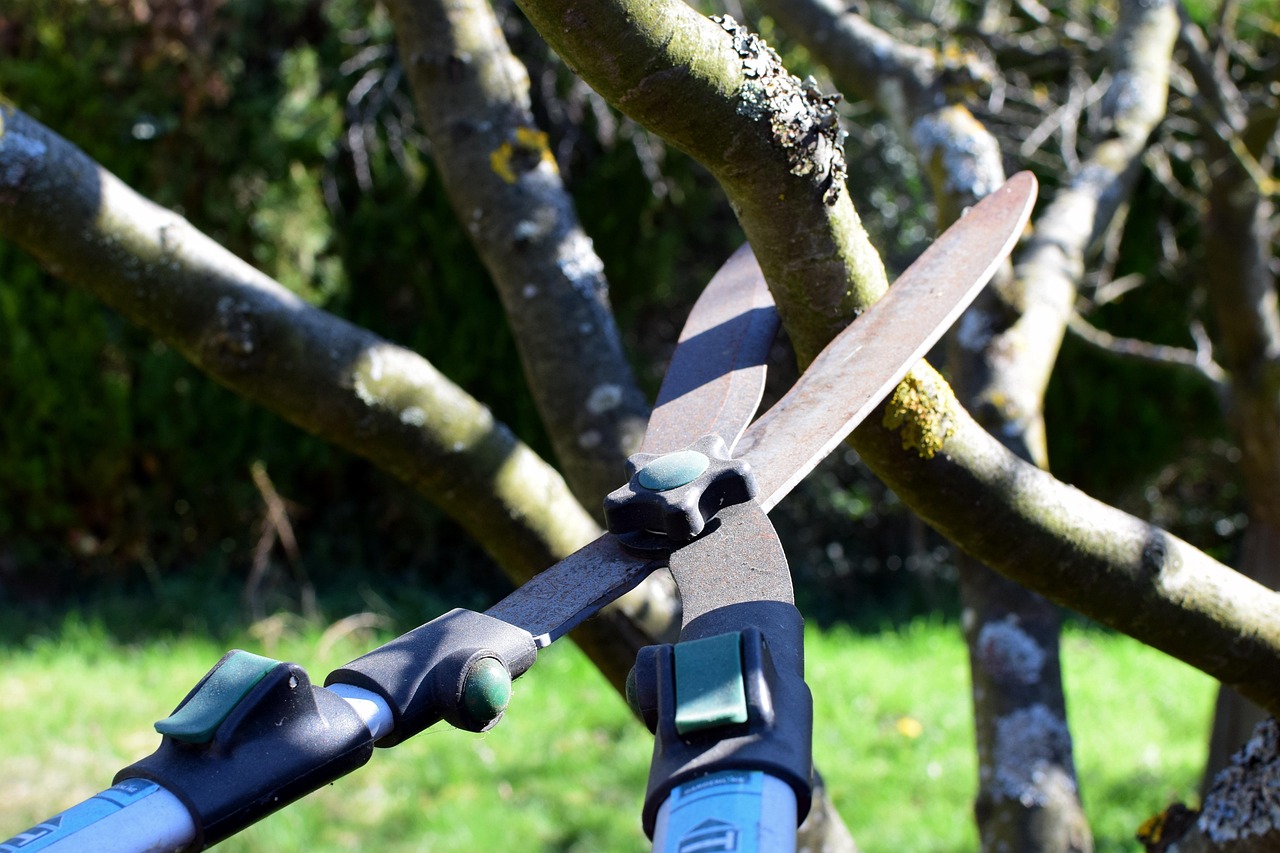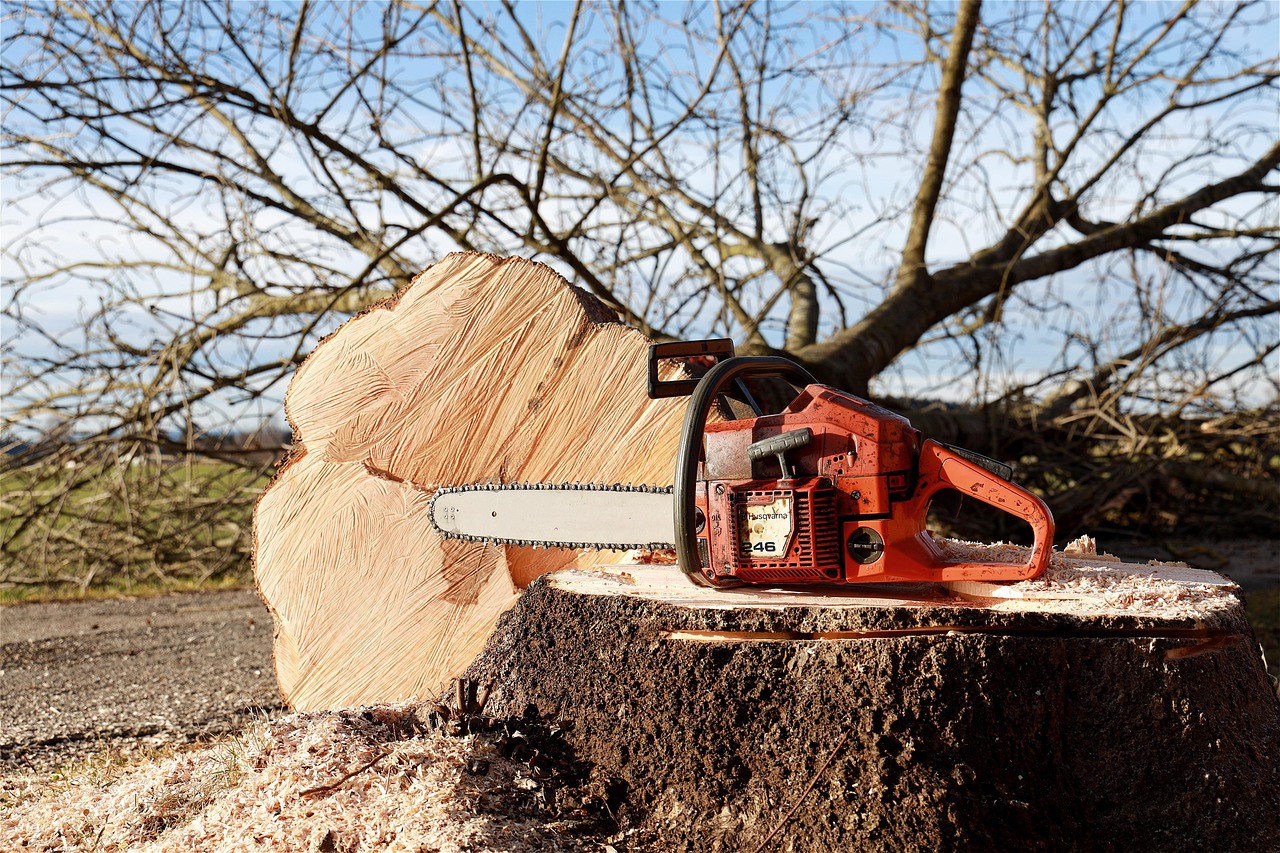Fruit tree pruning is essential for disease prevention. Proper pruning techniques enhance air circulation, reduce humidity around the tree, and eliminate dead or infected wood. These practices help maintain tree health and promote better fruit production.
Pruning fruit trees is a vital practice for any gardener or orchardist. It not only shapes the tree but also significantly affects its overall health. Many diseases can affect fruit trees, often leading to reduced yields or even tree death. By implementing effective pruning techniques, you can minimize the risk of disease and promote vigorous growth.

Understanding the importance of pruning goes beyond aesthetics. Regular and strategic pruning helps create a strong structure for the tree. This structure allows for improved light penetration and airflow, both crucial factors in disease prevention. When branches are too dense, moisture can accumulate, creating an ideal environment for fungal infections and other issues.
Why Pruning is Important for Disease Prevention
Fruit trees can be susceptible to various diseases, including fungal infections, bacterial diseases, and pests. Pruning helps in several ways:
- Improved Airflow: Cutting back excessive branches allows air to flow freely through the tree. Good airflow helps to keep foliage dry, which reduces the chances of fungal diseases.
- Better Light Penetration: Sunlight is essential for photosynthesis. Adequate light exposure helps maintain healthy foliage and fruit quality.
- Removal of Infected Wood: Pruning diseased branches prevents the spread of pathogens to healthy parts of the tree.
- Encouragement of New Growth: Pruning stimulates growth of new, healthy branches that are less likely to be affected by diseases.
Various factors influence how and when you should prune your fruit trees. The type of tree, its age, and the local climate all play a role in determining the best approach. Timing is particularly crucial, as improper pruning can lead to stress on the tree and make it more vulnerable to diseases.

Common Diseases in Fruit Trees
Before discussing pruning techniques, it’s essential to understand some common diseases that can affect fruit trees. Below is a table that outlines these diseases along with their causes and symptoms.
| Disease | Causes | Symptoms |
|---|---|---|
| Apple Scab | Fungal spores from fallen leaves | Dark lesions on leaves and fruits |
| Fire Blight | Bacterium affecting blossoms | Blackened, wilted blossoms and shoots |
| Crown Gall | Bacterial infection | Galls or tumors on roots and stems |
| Powdery Mildew | Fungal spores in warm, dry conditions | White powdery coating on leaves |
Identifying these diseases early is crucial for maintaining the health of your fruit trees. Pruning at the right time can help eliminate potential sources of infection. For instance, if you notice any signs of disease during the growing season, it is essential to prune away affected areas promptly.
Pruning Techniques for Disease Prevention
There are several effective pruning techniques that can help prevent disease in fruit trees:

- Thinning Cuts: This involves removing entire branches back to their point of origin. It reduces crowding and allows more sunlight and air into the tree.
- Heading Cuts: These cuts shorten branches to encourage bushier growth but should be done cautiously to avoid excessive leaf density.
- Clean Cuts: Always use sharp tools to make clean cuts. Ragged cuts can harbor pathogens that lead to infections.
- Avoiding Pruning During Wet Conditions: Pruning when it’s wet can spread diseases. It’s best to prune when the weather is dry.
The timing for pruning varies among different types of fruit trees. For instance, most deciduous fruit trees benefit from winter pruning when they are dormant. This is typically done in late winter or early spring before new growth begins. However, summer pruning can also be beneficial for certain species to control size and shape while promoting air circulation.
In addition to pruning techniques, it’s important to maintain tools properly. Disinfecting tools before and after use can prevent the spread of pathogens between trees. A simple solution of bleach and water or rubbing alcohol can effectively clean tools.
Seasonal Considerations for Pruning
Timing is a crucial factor when it comes to the effectiveness of pruning for disease prevention. Different seasons present unique opportunities and challenges for fruit tree care. Understanding these seasonal considerations can help you make informed decisions about when to prune your trees.

Winter Pruning
Winter pruning is often recommended for most deciduous fruit trees. During this dormant period, trees are less stressed, and pruning can be done more safely. Here are some benefits of winter pruning:
- Minimized Stress: The tree is not actively growing, so it can better tolerate the cuts made during pruning.
- Visibility: With no leaves, it is easier to see the structure of the tree, allowing for better decision-making regarding which branches to remove.
- Reduced Disease Risk: Many pathogens are less active in cold weather, decreasing the risk of infection from cuts.
The best time for winter pruning is typically late February to early March. However, this can vary based on local climate conditions. It’s important to monitor temperature and wait until the coldest part of winter has passed.
Spring Pruning
Spring is another critical time for pruning. This is often a time for light pruning to remove any dead or damaged wood that may have become apparent after winter. Here are some key points about spring pruning:
- Encouraging Healthy Growth: Pruning in early spring can stimulate new growth as the tree comes out of dormancy.
- Identifying Problems: As new growth appears, you can better identify any disease or pest issues that need addressing.
- Timing Matters: It’s essential to prune before the buds begin to swell to avoid cutting off new growth.
Summer Pruning
Summer pruning can be beneficial for certain varieties of fruit trees, especially for controlling size and shape. This technique can also improve air circulation and light penetration. Here are some summer pruning tips:
- Timing: Summer pruning should generally be done in late spring or early summer, after flowering but before the heat of summer sets in.
- Aim for Light Pruning: Focus on removing small branches and suckers to maintain shape without stressing the tree.
- Fostering Air Circulation: This is an ideal time to thin out dense areas that may trap moisture and promote disease.
Tools and Equipment for Effective Pruning
The right tools are essential for successful pruning. Using appropriate equipment not only makes the job easier but also helps prevent damage to the tree. Here’s a list of common tools and their uses:
| Tool | Purpose |
|---|---|
| Bypass Pruners | Ideal for cutting small branches and stems cleanly. |
| Loppers | Used for cutting larger branches that are too thick for pruners. |
| Saw | Essential for removing heavy branches or limbs. |
| Hedge Shears | Useful for shaping and trimming smaller trees or shrubs. |
| Pole Saw | Helpful for reaching high branches without needing a ladder. |
Always ensure that your tools are sharp and well-maintained. Dull blades can crush branches rather than making clean cuts, which may lead to infection. Regularly clean tools with disinfectant solutions to minimize the risk of spreading diseases between trees.
Pest Management During Pruning
Pests can pose a significant threat to the health of your fruit trees. While pruning helps manage tree health, it is also an opportunity to inspect for pests. Here are some strategies for pest management during pruning:
- Regular Inspections: Carefully examine branches for signs of pests such as aphids, spider mites, or borers while you prune.
- Pest Removal: Handpick visible pests or use a strong stream of water to dislodge them from the tree.
- Pesticide Application: If infestations are severe, consider applying organic pesticides after pruning but before new growth begins.
- Cultural Practices: Implement good cultural practices such as proper watering and soil management to keep trees healthy and more resistant to pests.
Maintaining a healthy ecosystem around your fruit trees can also help control pest populations naturally. Encourage beneficial insects, such as ladybugs and lacewings, which prey on harmful pests.
The Role of Mulching in Disease Prevention
Mulching is an effective method to support your fruit trees’ health. It serves several functions that contribute to disease prevention:
- Disease Control: Mulch helps suppress weeds that may harbor diseases and pests.
- Moisture Retention: A layer of mulch retains soil moisture, reducing stress on the tree.
- Temperature Regulation: Mulch insulates the soil, maintaining a stable temperature that supports root health.
The best materials for mulching include wood chips, straw, or shredded leaves. Apply a layer around the base of the tree, keeping it about 6 inches away from the trunk to prevent moisture buildup against the bark, which can lead to rot.
By understanding seasonal considerations, utilizing appropriate tools, managing pests, and implementing mulching strategies, you can significantly enhance your efforts in preventing diseases in fruit trees through effective pruning techniques.
Understanding Tree Anatomy for Effective Pruning
To prune effectively, it is essential to understand the basic anatomy of fruit trees. Knowledge of how trees grow and develop will help you make informed decisions about where and how to cut. This understanding can also aid in recognizing which branches are most susceptible to disease.
Key Parts of a Fruit Tree
A fruit tree consists of several key components, each playing a vital role in its growth and health:
- Roots: The root system anchors the tree and absorbs water and nutrients from the soil. Healthy roots are crucial for overall tree vitality.
- Trunk: The trunk serves as the main support structure, providing stability while transporting nutrients and water between the roots and the canopy.
- Branches: Branches extend from the trunk and hold leaves, flowers, and fruit. Their arrangement is vital for light exposure and airflow.
- Leaves: Leaves are essential for photosynthesis, allowing the tree to produce energy. They also play a role in regulating moisture through transpiration.
- Flower Buds: These buds develop into flowers, which are crucial for fruit production. Understanding bud development can guide pruning efforts.
- Fruits: The final product of successful flowering, fruits contain seeds that ensure the tree’s reproduction.
The Growth Cycle of Fruit Trees
Fruit trees undergo various growth stages throughout the year. Understanding these stages can help inform your pruning schedule:
- Dormancy: During winter, trees are dormant. This is the best time for heavy pruning without stressing the plant.
- Bud Break: In early spring, buds swell and eventually open. This marks the transition to active growth.
- Flowering: As buds open, flowers bloom. Pollination occurs during this time, leading to fruit set.
- Fruit Development: After pollination, fruits begin to develop. Proper pruning can influence both the quantity and quality of the fruit.
- Harvesting: Once fruits ripen, they can be harvested. Timing is crucial to ensure optimal flavor and texture.
Common Pruning Mistakes to Avoid
Even experienced gardeners can make mistakes when pruning fruit trees. Being aware of common errors can help you avoid them and ensure better outcomes for your trees.
- Over-Pruning: Removing too many branches can stress the tree and limit fruit production. Aim for a balanced approach that maintains the tree’s structure.
- Incorrect Timing: Pruning at the wrong time can lead to poor growth or increased disease susceptibility. Refer to seasonal guidelines for specific tree types.
- Poor Cuts: Making jagged or improper cuts can invite disease. Always use sharp tools and make clean cuts at a proper angle.
- Neglecting Tree Health: Focusing solely on aesthetics may lead to overlooking signs of disease or pest infestations. Always check the overall health of the tree before pruning.
The Role of Fertilization in Tree Health
Fertilization plays an essential role in maintaining healthy fruit trees. Adequate nutrition supports growth, enhances disease resistance, and promotes better fruit quality. Here are some important points about fertilization:
Choosing the Right Fertilizer
Selecting the appropriate fertilizer depends on the specific needs of your fruit trees. Consider the following factors:
- Nutrient Content: Look for fertilizers that provide balanced nutrients, including nitrogen (N), phosphorus (P), and potassium (K).
- Soil Testing: Conduct a soil test to determine nutrient deficiencies and pH levels in your soil. This information will guide your fertilization choices.
- Organic vs. Synthetic: Organic options, such as compost or well-rotted manure, can improve soil structure and promote microbial activity.
Fertilization Timing
The timing of fertilizer application is crucial for maximizing its effectiveness:
- Early Spring: Apply fertilizer just before new growth begins to provide nutrients at a critical time when trees are gearing up for growth.
- Mid-Summer: A second application can support fruit development but should be done cautiously; excessive nitrogen late in the season may lead to poor fruit quality.
Watering Practices for Healthy Trees
Irrigation is another vital component of fruit tree care. Proper watering practices help prevent stress and promote healthy growth. Here are some tips for effective watering:
- Deep Watering: Water deeply but infrequently to encourage deep root growth. Shallow watering leads to weak roots that are more susceptible to stress.
- Avoid Over-Watering: Over-watering can lead to root rot and other diseases. Ensure good drainage in your planting area.
- Mulch Application: As previously mentioned, mulch retains moisture in the soil. It also reduces weeds that compete for water.
The combination of understanding tree anatomy, avoiding common pruning mistakes, implementing proper fertilization, and maintaining effective watering practices will contribute significantly to the health of your fruit trees. These practices work hand-in-hand with pruning techniques to minimize disease risk and enhance overall productivity.
Integrating Integrated Pest Management (IPM) with Pruning
In addition to pruning techniques, integrating a comprehensive pest management system can significantly enhance the overall health of fruit trees. Integrated Pest Management (IPM) is a strategy that combines cultural, biological, and chemical practices to manage pests sustainably.
Components of Integrated Pest Management
Understanding the primary components of IPM can help you create a proactive approach to pest control:
- Monitoring: Regularly inspect your trees for signs of pests and diseases. Use traps or visual inspections to monitor pest populations.
- Threshold Levels: Determine acceptable levels of pest activity. Not all pests need to be eliminated; some can coexist without causing significant harm.
- Cultural Controls: Implement practices such as crop rotation, proper pruning, and sanitation to reduce pest habitats.
- Biological Controls: Encourage beneficial insects that prey on pests. For example, ladybugs and predatory wasps can help keep harmful insect populations in check.
- Chemical Controls: Use pesticides as a last resort. Opt for organic or less harmful chemicals and apply them at the right time to minimize impact on beneficial insects.
By incorporating IPM into your fruit tree care routine, you can effectively reduce the likelihood of pest infestations while maintaining a healthy ecosystem around your trees.
The Importance of Record Keeping
Maintaining detailed records of your fruit tree management practices is crucial for continuous improvement. Documentation can help you track what works and what doesn’t over time:
- Pruning Records: Keep notes on when and how you pruned each tree. Document the types of cuts made and any observations about tree response.
- Pest Monitoring: Record any pest sightings, treatments applied, and outcomes. This information helps in analyzing trends and developing future strategies.
- Fertilization and Watering Logs: Document when you fertilized or watered your trees. Include notes on weather conditions and tree performance after these interventions.
This record-keeping will not only assist in making informed decisions in subsequent seasons but will also contribute to the long-term health and productivity of your fruit trees.
Community Resources and Support
Engaging with local gardening communities or agricultural extension services can provide valuable insights into fruit tree care. Here are some resources to consider:
- Local Gardening Clubs: Join clubs or societies that focus on fruit cultivation. Members often share experiences and tips specific to your region.
- Extension Services: Many universities offer agricultural extension services that provide educational resources, workshops, and expert advice tailored to local conditions.
- Online Forums: Participate in online gardening forums or social media groups where you can ask questions and share experiences with fellow fruit tree enthusiasts.
Taking advantage of these resources can enhance your knowledge and skills in fruit tree management, leading to healthier trees and a more fruitful harvest.
Final Thoughts
Effective fruit tree pruning is an integral aspect of maintaining healthy trees and preventing diseases. Understanding tree anatomy, employing correct pruning techniques, and integrating good cultural practices like fertilization, watering, and pest management are essential for success. Additionally, keeping detailed records will help you refine your approach over time, ensuring that you are always improving your methods.
The journey of growing fruit trees is both challenging and rewarding. By following the strategies outlined in this article, you can cultivate trees that are not only beautiful but also productive. Remember, each tree is unique, and adapting your practices to fit the specific needs of your trees will yield the best results. With patience, care, and attention to detail, you can enjoy bountiful harvests for years to come.
